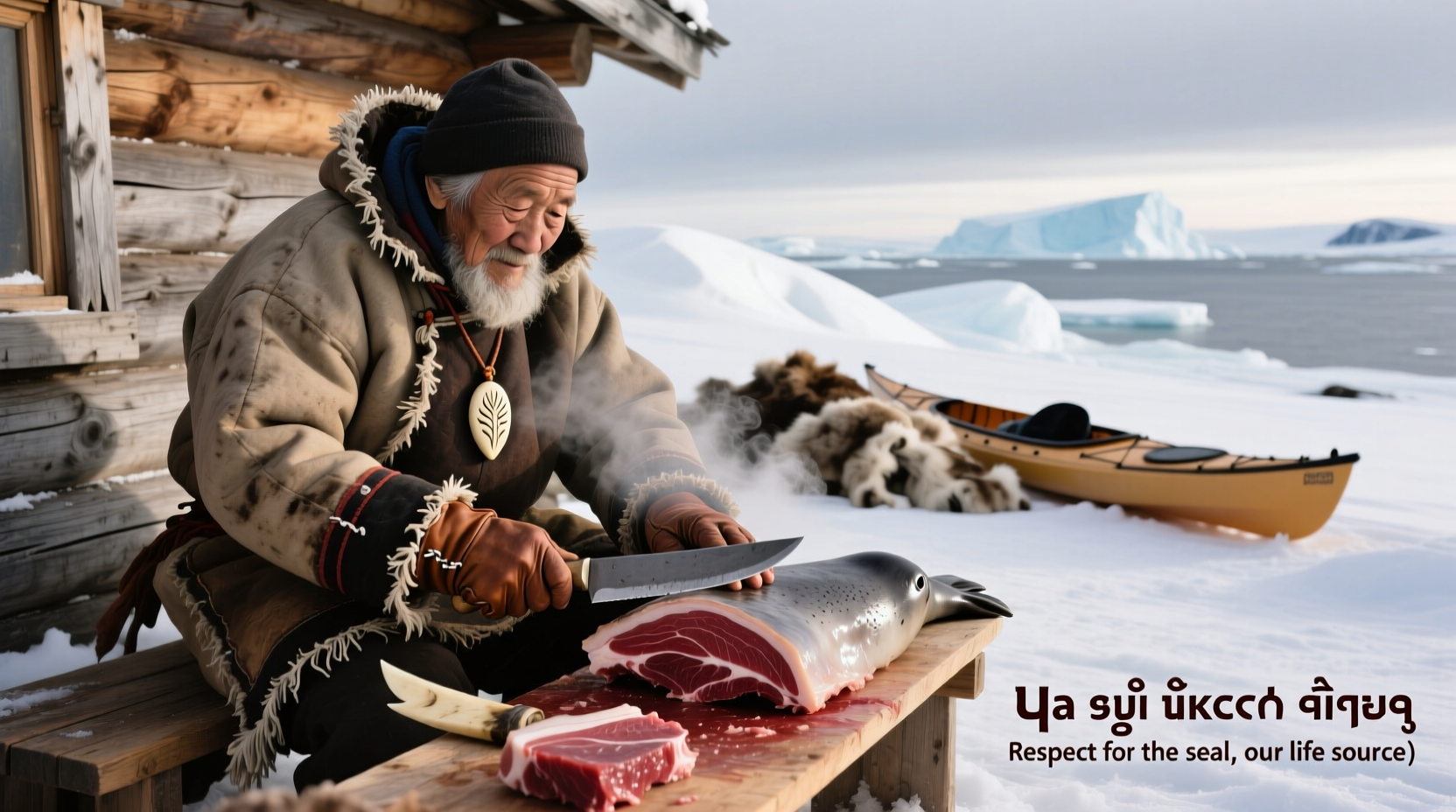Curious about the taste of seal meat? You're not alone. This comprehensive guide delivers exactly what you're looking for: an objective, scientifically informed description of seal meat's flavor profile, cultural context, and preparation methods. Whether you're researching for culinary curiosity, cultural understanding, or nutritional knowledge, you'll gain clear insights into this traditional Arctic food source.
Understanding Seal Meat's Basic Characteristics
Seal meat has been a dietary staple for Arctic indigenous communities for thousands of years. Unlike commercial livestock, seals are marine mammals whose diet directly influences their meat's composition and flavor. The meat comes primarily from harp, ringed, and hooded seals, with ringed seals generally considered to have the most palatable meat.
Nutritionally, seal meat is exceptionally rich in protein, iron, and omega-3 fatty acids while being low in saturated fat. According to the Government of Canada's Indigenous Services department, traditional consumption provides essential nutrients often scarce in Arctic environments.

Breaking Down the Flavor Profile
Describing seal meat's taste requires understanding several key elements that contribute to its distinctive profile:
Primary Flavor Notes
- Iron-rich - Similar to beef liver but less intense
- Gamey - Comparable to venison or wild game meats
- Marine undertones - Subtle oceanic notes without strong fishiness
- Fatty richness - Especially in blubber-rich areas
How Preparation Affects Taste
The method of preparation dramatically influences seal meat's final flavor. Traditional Inuit techniques have evolved specifically to optimize taste and safety:
| Preparation Method | Flavor Impact | Traditional Use |
|---|---|---|
| Raw (mattak) | Bold, fresh ocean flavor with crisp texture | Traditional Inuit delicacy |
| Boiled | Milder, less gamey, tender texture | Common household preparation |
| Dried | Concentrated flavor, chewy texture | Preservation for winter months |
| Smoked | Complex smoky notes, reduced gameiness | Special occasions and ceremonies |
Cultural Context and Historical Consumption
Seal hunting represents far more than food procurement for Arctic indigenous communities—it's a cultural practice deeply woven into social identity and survival. The Inuit Circumpolar Council documents how seal hunting traditions date back over 4,000 years, with knowledge passed through generations.
Historically, every part of the seal was utilized: meat for food, blubber for oil and heat, skin for clothing and boat coverings. This sustainable approach contrasts sharply with modern commercial hunting practices that have sparked international controversy.
Safety and Ethical Considerations
Before considering seal meat consumption, several important factors require attention:
Nutritional Benefits vs. Potential Risks
While seal meat offers significant nutritional advantages, proper preparation is essential. The Arctic Council's health studies indicate that traditional preparation methods reduce potential contaminants while preserving nutritional value. Mercury levels vary by species and age, with younger seals generally containing lower concentrations.
Legal and Conservation Status
Seal hunting regulations differ significantly by country:
- Canada - Regulated traditional hunt permitted for indigenous communities
- Norway - Commercial hunting allowed with quotas
- United States - Marine Mammal Protection Act generally prohibits seal hunting
- European Union - Commercial import ban since 2009
Conservation status varies by species, with harp seals considered abundant while some populations face localized pressures. The International Union for Conservation of Nature (IUCN) monitors these populations closely.
Modern Perspectives on Seal Consumption
Today, seal meat consumption exists at the intersection of cultural preservation, food security, and ethical debate. In Arctic communities where imported food is prohibitively expensive, traditional seal hunting remains vital for nutritional security.
According to a 2023 study published in Arctic Anthropology, over 70% of Inuit households in Nunavut continue to rely on traditional foods like seal for significant portions of their diet. The research highlights how these foods provide not just nutrition but cultural continuity in rapidly changing environments.
Internationally, perceptions vary dramatically. While some view seal hunting as a necessary cultural practice, others condemn it based on animal welfare concerns. This complex reality underscores why understanding the actual taste and cultural context matters beyond mere culinary curiosity.











 浙公网安备
33010002000092号
浙公网安备
33010002000092号 浙B2-20120091-4
浙B2-20120091-4